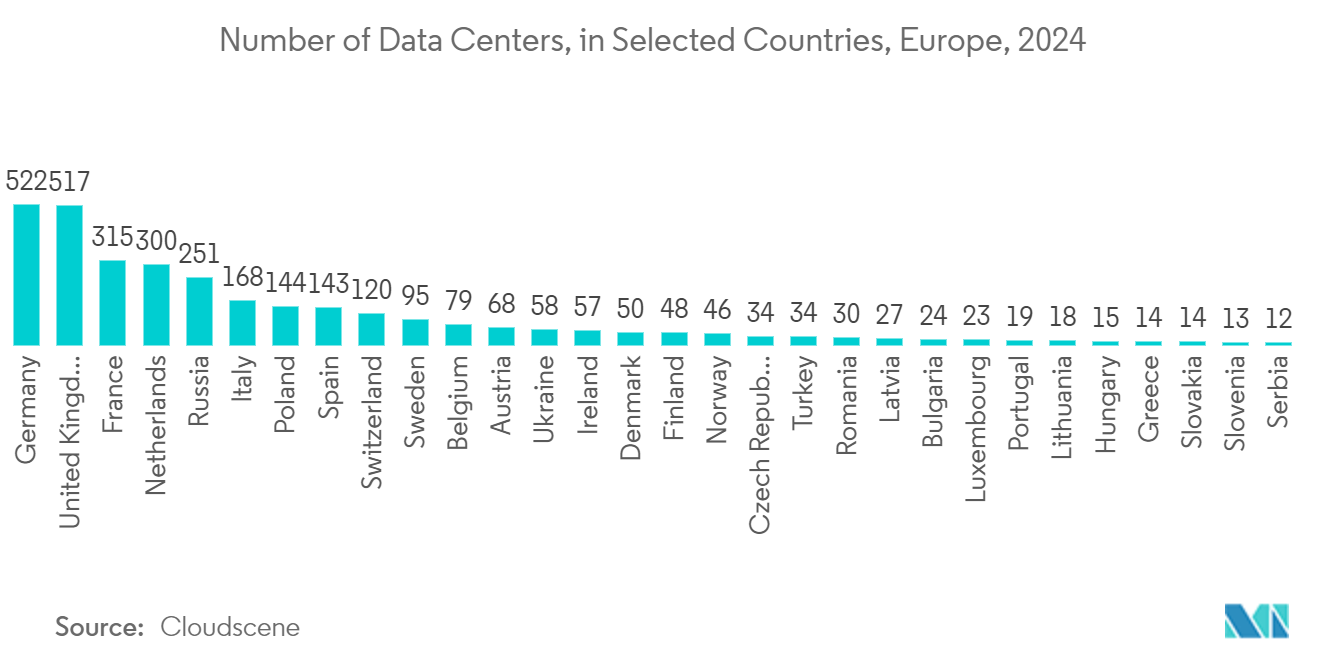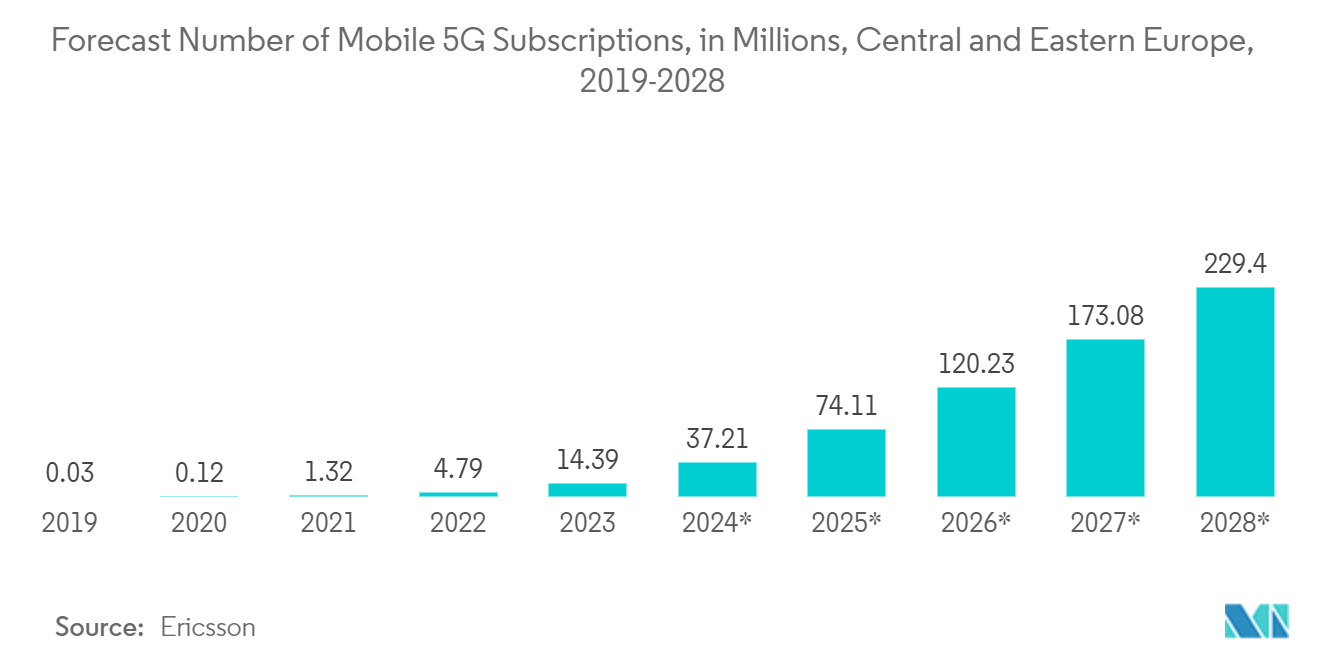Market Trends of Europe Data Center Interconnect Industry
Ongoing Trend Toward Cloud Migration is Expected to Drive the Market
- The growing demand from domestic and international enterprises and cloud computing customers has pushed companies to expand data center facilities. Public cloud services dominate the data center market in Europe. The use of private cloud services by government agencies is growing as they plan to make greater use of cloud services in public administration during the forecast period. However, hybrid cloud services have more substantial growth potential than private and public cloud services. The growth in cloud technology is, in turn, a growing market for data center interconnect technology in the region.
- Moreover, the growing adoption of cloud computing (which further escalated due to the COVID-19 pandemic), increasing penetration of foreign cloud vendors across Europe, governmental rules and regulations for local data security, and the increasing investments by domestic European players are some of the major factors that are driving the demand for interconnected data centers in the region.
- Furthermore, Microsoft Corporation has invested in multiple data center locations in Norway, while Google LLC has expanded its operations in Finland. It is not just the cloud enterprise players; enterprises and interconnection providers are also increasingly investing in the Nordics. This is expected to boost the growth of the data center interconnect market in the region over the forecast period.
- In July 2022, the US communications infrastructure provider Zayo announced that it had launched the Zeus subsea route that connects the United Kingdom and continental Europe as cloud service providers seek faster internet connections. Currently, undersea cables transmit nearly all the world's internet data traffic, and many technology companies, including Alphabet's Google and Meta, have also invested in building their subsea cables.
- The demand for data centers is growing with the popularity of cloud solutions and industry applications, such as AI, 5G, and edge computing. In return, it is anticipated to give immense opportunities to the data center interconnect market. According to Cloudscene, as of February 2024, there are 522 data centers located in Germany, the most in any European nation. Data centers are buildings that house computer systems and centralize organizations' shared information technology (IT) operations.

Germany to Hold a Significant Market Share
- The growing number of data centers, increasing investment in cloud technologies, and expanding end-user markets are major factors driving the German data centers’ investment in the interconnect market. The stringent regional laws, like GDPR and Personal Data Protection Initiatives (Gaia-X), further boost the region's local data center construction and development.
- With the development of edge computing solutions, there has been an increase in the demand for high-capacity networks. The German economy has increased the need for edge computing solutions due to disruptive technologies like autonomous vehicles, cloud computing, IoT, and advanced robotics. Higher bandwidths and better processing speeds are now necessary due to the expanding use of these technologies.
- Low latency is crucial to overcoming these obstacles, raising the demand for colocation in data centers. Cloud service providers can offer high bandwidth and low latency by colocating their network design close to the users. The development of 5G has allowed interconnection service providers to deliver these services with better connections across remote German locations, fueling the market's expansion.
- The development of 5G and immersive technologies like augmented reality, virtual reality, and AI has also increased the demand for more bandwidth to be set aside for data sharing across businesses. The bandwidth capacity of Europe's interconnections is growing quickly, and this trend is expected to continue. The telecommunications industry has the most significant market share because of the rising need for high-speed connectivity to improve client experiences. In addition, the region's interconnection service providers benefit from expanding demand for enhanced connectivity and decreased data transfer latency due to the rapid uptake of smart devices.
- Over the past few years, data center workloads have increased due to the development of 5G networks and other disruptive technologies like AI and the Internet of Things. Along with managing high workloads, the rising use of cloud computing and As-a-Service models within businesses has boosted the demand for specialized skill sets. According to Ericsson, the number of mobile 5G subscriptions in Central and Eastern Europe is expected to reach 229.40 million by 2028. Germany, being one of the most developed countries in Central Europe, is expected to witness a significant growth in the number of mobile 5G subscriptions.

